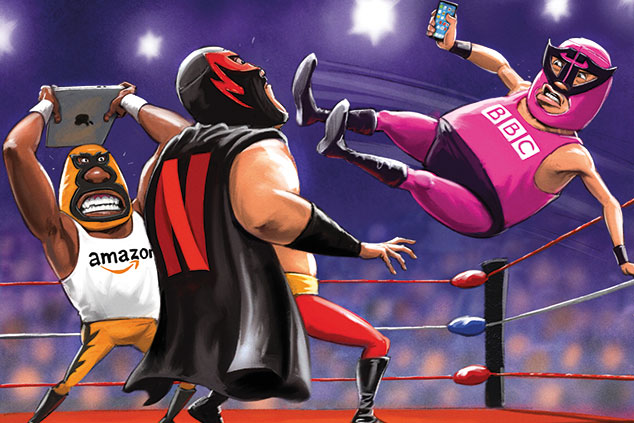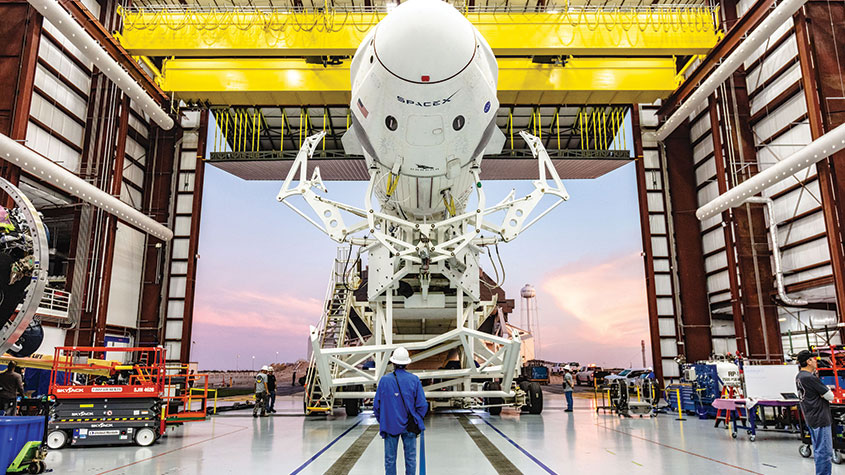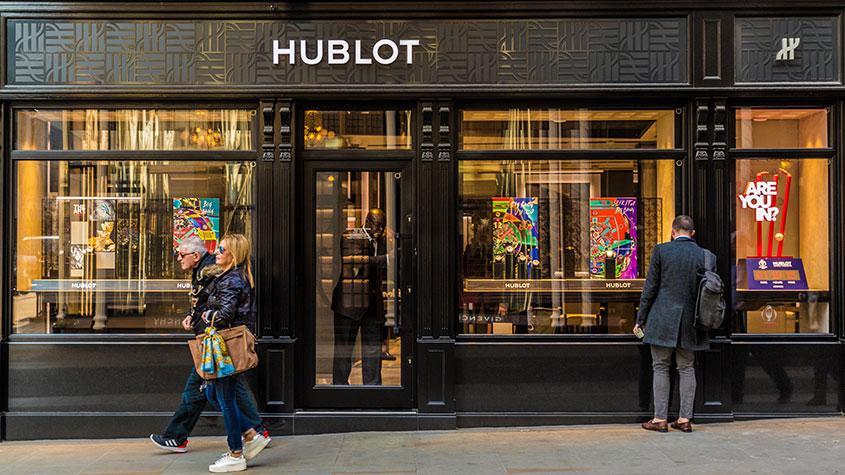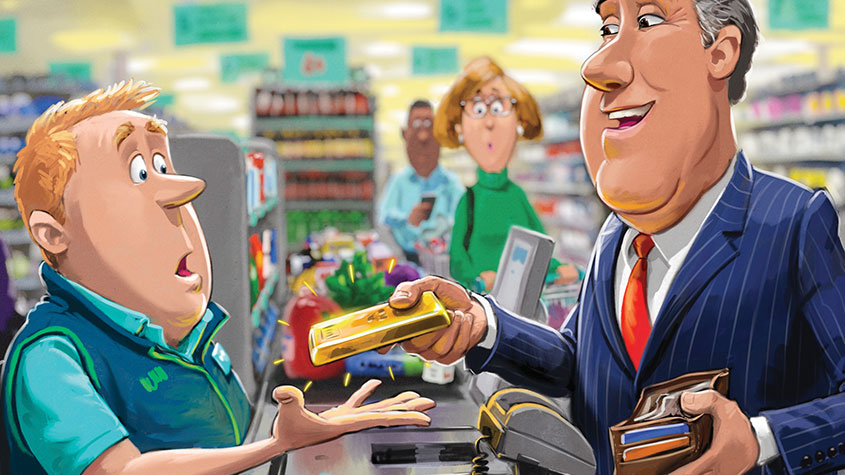
In 1997, Netflix was established as a mail-order film and television show delivery service. Slightly more than two decades later, it has become a technology giant spearheading a dramatic shift in the television industry. As internet speeds gradually improved, Netflix began to offer a streaming service, delivering programmes to televisions or home computers through the internet, in return for a monthly subscription. It soon caught on, not least because viewers could "binge-watch" entire television series' and were not bound by the package and channels offered by a cable or satellite television provider.
Today, having changed the way we consume television, Netflix has amassed 137 million subscribers worldwide. It offers an extensive line-up of acquired films, dramas and documentaries as well as its own original programmes, or "content" big hits include The Crown, Stranger Things and Bird Box via broadband for a cheap monthly fee (starting at $7.99 in the US, £5.99 in the UK).
In the US market in particular, consumers in their droves have cut the cord' from expensive cable or satellite TV packages, which can cost over $100 a month, in favour of cheaper streaming services such as Netflix. Around 55% of households in the US now subscribe to a streaming service, paying for two services on average, with Netflix, Amazon and Hulu the market leaders. By comparison, US pay-TV penetration stands at 80% and is falling. Some think an important milestone could be passed in 2019: the number of US homes with streaming services could eclipse those subscribing to pay-TV services.
MoneyWeek
Subscribe to MoneyWeek today and get your first six magazine issues absolutely FREE

Sign up to Money Morning
Don't miss the latest investment and personal finances news, market analysis, plus money-saving tips with our free twice-daily newsletter
Don't miss the latest investment and personal finances news, market analysis, plus money-saving tips with our free twice-daily newsletter
Prospects of a global showdown
Investors, however, have long factored all this in, and have begun to worry about the future. Having started 2018 as one of the market's top performers, notching up successive record highs, Netflix has suffered a sharp reversal of fortune in the past six months. Like other FAANG companies Facebook, Amazon, Apple, Netflix and Google-parent Alphabet Netflix shares are deep in a bear market. Its share price has tumbled by more than a third from its peak in July. Since then, the prospect of a global slowdown has prompted investors to reassess the growth outlook and the valuations of America's biggest tech names.
Specific problems have also beset Netflix, notably concerns about its rising expenditure on content, fears about slowing subscriber growth and the prospect of increased competition from rival streaming services. Netflix looks to have a fight on its hands in 2019. The streaming TV landscape, which it dominates, is about to enter a much more mature, competitive phase.
Netflix has a fight on its hands
Rival FAANG firms are wading into Netflix territory. Apple is preparing its own streaming service for launch this year, having spent $1bn on new content in 2018. Google's YouTube Premium has more than 20 forthcoming original shows in the pipeline, while Facebook is commissioning more for its Facebook Watch video service. Amazon continues to invest heavily in new programming for its loss-leading Amazon Prime Video service.
US media giants Disney and AT&T, meanwhile, have fully woken up to the threat posed to their business models by Netflix. Between them, they have spent more than $150bn on huge acquisitions to bolster their arsenals of content; Disney has acquired 21st Century Fox while AT&T has bought Time Warner. Both firms plan to launch their own streaming services later this year. The new Disney+ service, for instance, is likely to carry blockbuster franchises such as Star Wars and Marvel films. AT&T now has the largest library in Hollywood thanks to its Time Warner acquisition, which came with hit shows such as Friends, Game of Thrones and films including Fantastic Beasts.
In Britain, traditional TV players BBC, ITV and Channel 4 are exploring the idea of forming an alliance to fend off Netflix, which had 9.78 million UK subscribers at the end of 2018, according to the consultancy Ampere Analysis. That puts it ahead of Sky, with an estimated 9.6 million households, while Sky's Now TV streaming service is thought to have about 1.5 million subscribers.
The UK media regulator Ofcom, alarmed at the growing dominance of the UK television market by foreign firms, is actively encouraging British broadcasters to team up on a joint streaming service ten years after such a proposal was blocked by the Competition Commission.
A hamster on a wheel
Given the array of competition, can Netflix thrive in the year ahead, or are its best days behind it?
Many analysts are cautious, worrying that the firm is wildly overvalued with a $116bn market capitalisation. Even accounting for its recent share price fall, Netflix still has a sky high price/earnings ratio(p/e) of 95. "There would have to be some very optimistic scenarios for Netflix to justify the current share price," says Ian Whittaker, head of European media research at Liberum Capital.
Whittaker cites several problems facing Netflix this year. One is that many studios, such as Disney, are expected to remove popular films and TV shows they license to Netflix so they can feed their own streaming services. He also says Netflix's low-cost subscription model limits its ability to push through aggressive price rises meaning that growth can only really come by boosting subscriber numbers. It therefore has to spend heavily on content to keep attracting customers. "That's difficult to sustain on a long term basis it's a bit like being a hamster on a wheel," says Whittaker. You have to keep running, or the wheel stops turning.
Indeed, whenever there's a sign that "the hamster wheel" is slowing down, even by a modest amount, Netflix's share price plunges. Last July, for example, Netflix's value fell 14% in a day after it reported a million fewer subscribers than investors had expected.
So, in its continuing bid to grow, the amount of money that Netflix is spending is still rising. Netflix will invest $1.2bn in technology this year, spend $12bn on content and allocate $1.9bn to marketing, according to Enders Analysis.
In October, Netflix announced plans to raise an additional $2bn in debt to help finance expenditure, taking its long term debt to $8.34bn.Clearly, this is a company committed to spending its way to growth for the foreseeable future.
Going global
That said, its growth certainly looks set to continue in 2019. "We expect Netflix to finish 2019 with around 160 million subscribers," says Toby Holleran, senior analyst at Ampere Analysis. Holleran notes that after a period of strong growth in the US, Netflix is showing signs of reaching saturation point in its home market, where it has 58 million subscribers.
So it is now seeking to expand internationally. In its latest quarter, the streaming service added nearly seven million new subscribers, and six million of these came from outside the US. It is available in more than 190 countries.
Recently, Netflix has invested heavily in local, foreign-language productions to tempt international subscribers. Europe is a key target: in 2018, Netflix earmarked $1bn to spend on production from the continent.It has a slew of local shows in the works in France, Germany, Italy and Spain. The company has also invested a lot in Latin America, and recently said that it was working on six original titles from Colombia. The huge Indian market has been particularly important for Netflix. Last summer, the company debuted an original Indian movie, Lust Stories, along with two Indian original shows Sacred Games and Ghoul. It is also planning to commission shows from Africa for the first time this year.
Taking on national broadcasters
Ampere Analysis says Netflix has 293 original shows in production around the world far more than its nearest rival Amazon, which has 76, or Apple with 26. "The amount of content it is commissioning and producing is getting larger and larger and a lot of that is localised content," says Enders Analysis's senior research analyst Tom Harrington, who explains that viewers generally want to watch locally made shows they can relate to and that reflect their lives rather than imported programmes. This, he adds, is a major worry for local broadcasters around the world, such as the BBC in the UK or TFI in France, who risk losing viewers to deep-pocketed streaming firms like Netflix.
That said, the total amount of content Netflix is producing in each country around the world is still very small compared to traditional broadcasters, and it is impossible to tell how locally made shows such as The Crown are faring because Netflix does not release viewing figures for its programmes. "I have doubts whether its local language strategy will work," says Whittaker, who points out Netflix has only had a major impact in markets where English is widely spoken and the domestic content sector is weak. However, Netflix's international business model is very different to traditional broadcasters, who look to achieve a mass market share in their home countries. By contrast, the numbers start to stack up very well for Netflix if it can achieve just a 1% share in each of the 190 countries where it has a presence.
And Netflix is cannily building its presence around the world not just through spending more on production, but also by partnering with many of the broadcasters that originally viewed it as a competitor. In the UK, for example, Netflix has struck partnership deals with pay-TV firms Sky, Virgin and BT to make its service available to their subscribers.
It has similar deals with pay-TV companies in Germany, Italy and the Middle East. Pay-TV firms reckon it is better if viewers subscribe to Netflix through their platform rather than leaving it. And, for Netflix, such partnership deals provide valuable access to potentially millions more customers.
Will Netflix's rivals catch up?
Harrington believes Netflix has a first-mover advantage over rival streaming services being planned by Apple, Disney and AT&T. "In terms of understanding the sector, it is ten years ahead of anybody else."
A key part of Netflix's success is down to its superior tech platform. "Anyone who has been recommended by Amazon the same show they have just watched will understand the value of Netflix's unobtrusive recommendation engine, deceptive in its ostensible simplicity," says Harrington.
Many think Disney and AT&T may be too late to the market to compete effectively, and may balk at the heavy investment required. The companies will also have to choose which of their content to restrict to their own streaming services, and what to make available on other platforms where it could earn valuable revenue.
AT&T, for example, recently struck a $100m deal with Netflix to license Friends for another year preferring to take the money rather than starve a competitor of valuable content.
Could local broadcasters such as the BBC, ITV and Channel 4 launch an effective joint service to counter Netflix here? Few believe it is possible. Enders Analysis says the global scale and debt-funded spending of foreign streaming giants allow themto invest in content in a way UK operators cannot match. Netflix is also subject to much lighter broadcasting regulation than local broadcasters. Crucially, it's also under a lot less regulatory scrutiny than its FAANG rivals, particularly Facebook and Google.
As for Apple, there is some confusion about what its service will look like amid suggestions the company is concerned that edgy content could prompt a boycott of its phones and computers. Amazon, despite spending billions on content, has not had a truly break-out hit show, which is perhaps why it has spent a fortune acquiring the rights to adapt Lord of the Rings as a TV series.
All this underlines how impressive Netflix's ascendancy has been. "It's been no easy feat," says Harrington. It is the dominant player, boasts innovative tech, has already invested tens of billions of dollars in content, and crucially has amassed a string of hits. That head start is going to make it very hard for others to emulate Netflix's success and to catch up with it in 2019.
Who will profit from the new television landscape?
Of all Netflix's rivals, Disney (NYSE: DIS) may be best placed to give it a run for its money. It plans to launch its own streaming service, Disney+, later this year.
The service will have a formidable array of content on offer, with films from Disney's main entertainment studios, including Walt Disney Pictures, Pixar, Marvel Studios and Lucasfilm, as well as TV and movies from the recently acquired 21st Century Fox.
Catching up with Netflix's head start and 137 million global subscribers in the streaming market will be tough and very expensive. But Disney has ample scope to absorb losses given its large and diverse operations; divisions range from theme parks to cruises. The well-run group has a global footprint and is also valued much more reasonably than its streaming rival. Its p/e ratio is just 15.5.
ITV (LSE: ITV) is in talks with the BBC and Channel 4 about a joint streaming service. This could prove a compelling home for top-quality British content. Bringing together such fierce competitors, with very different funding arrangements, may prove challenging. But the shares, depressed by Brexit uncertainty among advertisers, which may soon clear, come with a dividend yield of 6%. So investors will be paid to wait and see if the streaming moves with BBC and Channel 4 can provide some impetus.
With the big players in the television and film industry racing to provide consumers with enticing content, smaller programme makers should benefit too. Consider Entertainment One (eOne, LSE: ETO) a British film and TV production and distribution firm with a global reach, selling top dramas Designated Survivor and The Walking Dead as well as kids' favourite Peppa Pig around the world. Last year eOne completed the acquisition of top Hollywood film and TV producer Mark Gordon's firm; he is now eOne's chief content officer. eOne also recently announced a deal to finance, produce and distribute 5 Year, the next show from The Walking Dead creator Robert Kirkman.
Also worthy of further research are indirect beneficiaries of the rush for content such as Adobe Systems (Nasdaq: ADBE), the US firm best known for its Creative Suite of software tools used by designers and editors. Its Premier Pro video editing software is increasingly popular with programme makers. The shares have pulled back significantly since hitting a record in October.
Film Finances (Aim: FFI) has a near-70-year track record in providing completion guarantees for films and TV shows giving assurance to financiers that the productions they back will be completed on time and on budget.
The group has had a disappointing year. But increasing production levels could see it benefit from more contracts in the year ahead, and the firm has also diversified into production equipment rental and distribution.
Get the latest financial news, insights and expert analysis from our award-winning MoneyWeek team, to help you understand what really matters when it comes to your finances.
-
 FCA proposes new ratings system for workplace pension schemes
FCA proposes new ratings system for workplace pension schemesThe City watchdog has proposed new rules to help ensure pension schemes are providing value for money
-
 Fund inflows hit a six-month high in November – where are investors putting their money?
Fund inflows hit a six-month high in November – where are investors putting their money?Investors returned to the financial markets amid the Autumn Budget in November 2025 but caution remains.
-
 Invest in space: the final frontier for investors
Invest in space: the final frontier for investorsCover Story Matthew Partridge takes a look at how to invest in space, and explores the top stocks to buy to build exposure to this rapidly expanding sector.
-
 Invest in Brazil as the country gets set for growth
Invest in Brazil as the country gets set for growthCover Story It’s time to invest in Brazil as the economic powerhouse looks set to profit from the two key trends of the next 20 years: the global energy transition and population growth, says James McKeigue.
-
 5 of the world’s best stocks
5 of the world’s best stocksCover Story Here are five of the world’s best stocks according to Rupert Hargreaves. He believes all of these businesses have unique advantages that will help them grow.
-
 The best British tech stocks from a thriving sector
The best British tech stocks from a thriving sectorCover Story Move over, Silicon Valley. Over the past two decades the UK has become one of the main global hubs for tech start-ups. Matthew Partridge explains why, and highlights the most promising investments.
-
 Could gold be the basis for a new global currency?
Could gold be the basis for a new global currency?Cover Story Gold has always been the most reliable form of money. Now collaboration between China and Russia could lead to a new gold-backed means of exchange – giving prices a big boost, says Dominic Frisby
-
 How to invest in videogames – a Great British success story
How to invest in videogames – a Great British success storyCover Story The pandemic gave the videogame sector a big boost, and that strong growth will endure. Bruce Packard provides an overview of the global outlook and assesses the four key UK-listed gaming firms.
-
 How to invest in smart factories as the “fourth industrial revolution” arrives
How to invest in smart factories as the “fourth industrial revolution” arrivesCover Story Exciting new technologies and trends are coming together to change the face of manufacturing. Matthew Partridge looks at the companies that will drive the fourth industrial revolution.
-
 Why now is a good time to buy diamond miners
Why now is a good time to buy diamond minersCover Story Demand for the gems is set to outstrip supply, making it a good time to buy miners, says David J. Stevenson.